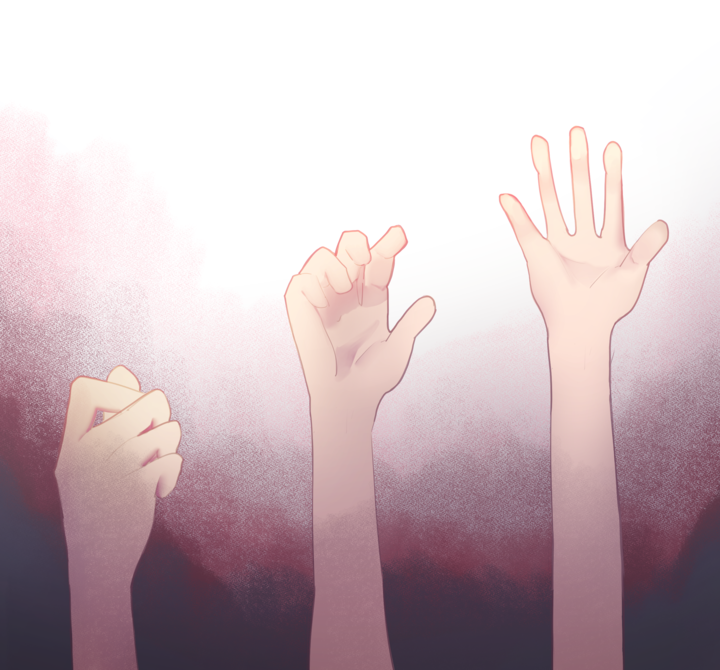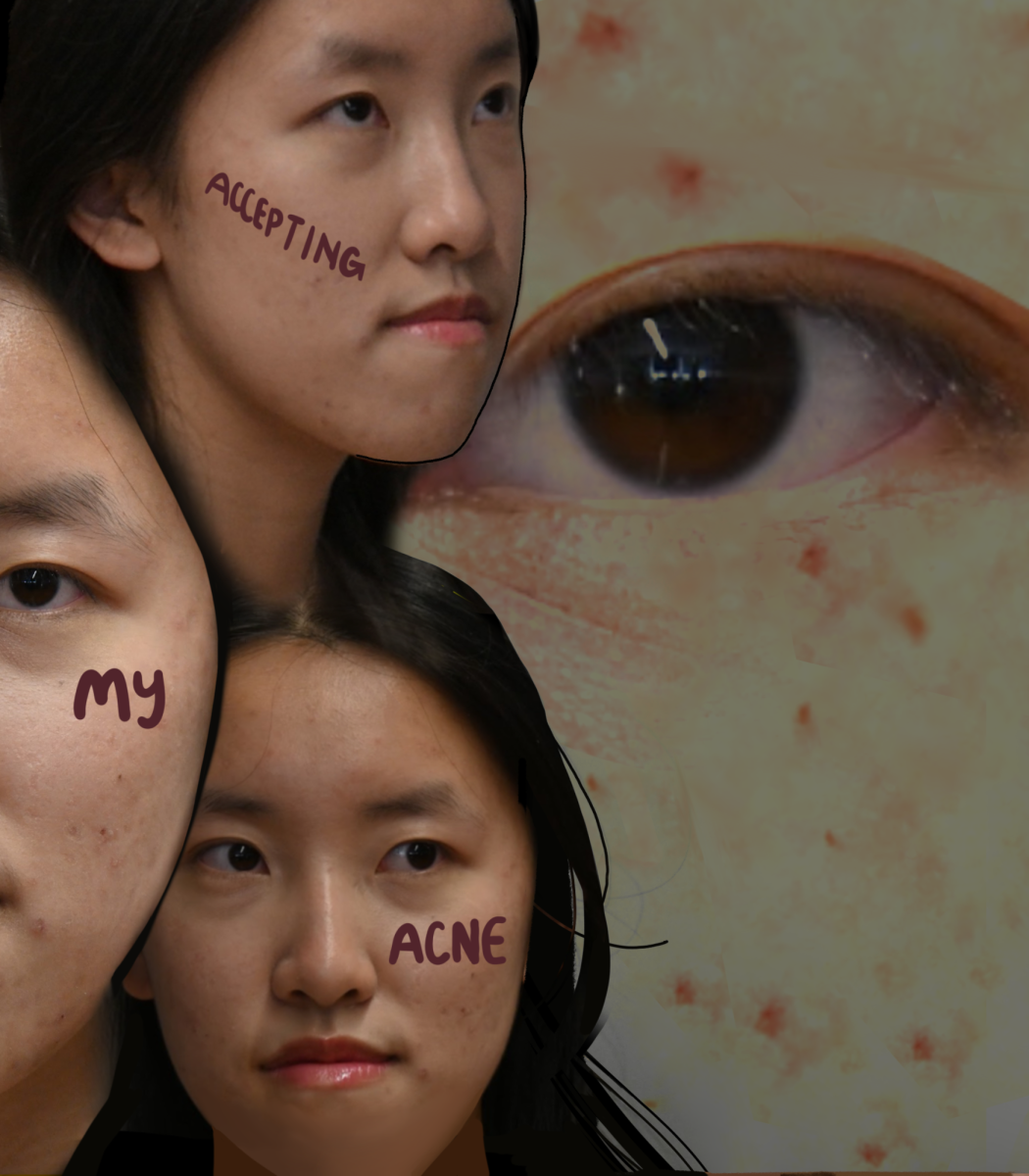Originally published on May 24, 2016

They were afraid they would laugh because she wasn’t wearing a bra.
It was a nice sunny day in the Richmond district when a woman visited the Academy of Sciences to check out the exhibits. A few high school students in the Academy’s Careers in Science internship program greeted her, but others didn’t. The conversations with this certain female visitor were kept to a minimum, especially with the boys in the internship. The reason? They were afraid they would laugh because she wasn’t wearing a bra, according to senior Kristina Schagane, an intern for the program. When Schagane witnessed her coworkers acting the way they did, she was shocked. “I didn’t think students our age would find something I see as so trivial to be so appalling, and I certainly didn’t expect them to chuckle,” she said. “I wasn’t offended, but I thought it was kind of ridiculous.” And I agree.
People should not feel repulsed or uncomfortable by the female form. In addition to that, women should not have to feel embarrassed if they decide to not wear a bra. They should feel comfortable in their own bodies and not be shamed for having their body parts, particularly breasts. Men and women have breasts, but arguably, women feel more compelled to hide them. This is due to the history of media sexualizing female breasts and then reinforcing the idea that women need to cover up their breasts. We need to break away from these archaic ideas, desexualize how people see breasts, and allow ourselves to wear whatever we want for ourselves and not because someone else told us to.
We need to break away from these archaic ideas.
Modern bras have been around since the beginning of the 20th century. From two handkerchiefs tied together with a ribbon to these complex, wire-reinforced, adjustable, satin lace trimmed undergarments, bras have come a long way.
In addition to changes in material and appearance, their use has also expanded. Caresse Crosby (born Mary Phelps Jacob) patented the first modern bra in 1914, specifically for comfort and support, replacing restrictive and heavy corsets, according to Time’s “The 100-Year History of the Modern Bra Is Also the History of Taking Off Bras.” Today, in addition to providing comfort and support, bras have become a necessity in women’s fashion and lives. For example, one of the most famous lingerie suppliers, Victoria’s Secret, holds annual televised fashion shows to showcase their bras and other intimate apparel to boost their brand name and get women to buy their products.
But bras aren’t necessary. Wearing a bra does not relate to any real health benefits, but instead might actually relate to damaging breast tissue, causing the breasts to sag at a quicker pace, according to a 15-year study by French professor Jean-Denis Rouillon of University Hospital of Besançon.
But bras aren’t necessary.
If it sounds like I’m against bras, I’m not. I’m all for people wearing them for comfort, confidence. What I’m against is the idea that women have to wear them to conform to what society wants.
I’m obviously not the first to tackle this. According to the Cultural Encyclopedia of the Breast, “The increased focus on breasts teaches young girls and women to police their bodies to maintain idealized femininity and attractiveness.” From the 1968 Miss America Pageant protest — in which feminists threw away their bras to boycott the unrealistic beauty standards the pageant impressed upon its viewers, leading to the myth that they burned their bras — to some of today’s feminists joining braless movements like the “Free the Nipple” movement, which aims to normalize and desexualize female breasts, this is an ongoing issue that I would like to give attention to.
Over the summer, I came to the conclusion that bras were unnecessary with certain clothes I owned, and felt more physically comfortable when I went without one. I enjoyed weeks of bralessness during the summer and decided I would try some days at school without one. However, when I actually followed through with my decision, I was faced with waves of comments from friends that made me feel painfully insecure.
“How can you go to school like that?”
“Joy, cover up!”
“We could definitely see your… Y’know…”
“How can you go to school like that?”
When I took off my jacket, they dramatically covered their eyes and made squealing noises. Even though they were my friends and probably just joking, they made me feel incredibly self-conscious, enough to make me cover up my chest for the rest of the day.
They not only succeeded in making me uncomfortable, they felt uncomfortable themselves because it wasn’t normal for them.
Although women do have the freedom to choose what they want to wear, social pressure from heavy media advertising and coverage ultimately restricts those decisions, reinforcing the idea that bras are the social norm.
When female celebrities go braless in public, like Rihanna or Miley Cyrus, whole articles or photosets are dedicated to them. Some oversexualize their nipples and praise them for not wearing a bra, saying that nipples are “the only good thing about record freezing temperatures,” according COED magazine. This trivial topic of someone deciding to go braless perpetuates the idea that when women go without a bra, they’re seen as daring or scandalous.
People should not have to worry about others’ clothings. They also shouldn’t feel uncomfortable when faced with something as simple as a little nipple showing through a shirt. As far as I know, there is no law against not wearing a bra in public so why do people have to care so much when a woman isn’t wearing one?
“Feminism means fighting for a world where women are able to freely pursue their own womanhood outside of structures of systemic domination.”
Advanced Placement English teacher Jennifer Moffitt caught herself wondering why she cared whether or not a rather big breasted woman she often sees was wearing a bra. “Part of me is like, ‘Why doesn’t she wear a bra?’ and then I’m like, ‘What is wrong with me that I think there’s something wrong with that?’” Moffitt said. “It’s interesting to think that there’s pressure for people to wear bras when it’s not like it’s something that needs to be. Breasts are construed as sexual objects and therefore there’s a certain expectation they be hidden away.”
Schagane also objects to the way our culture sexualizes the female body. “Media portrays boobs and nipples of women as scandalous, while it is completely acceptable when men reveal the same parts, a gross double standard that gives more power to the patriarchy.”
This idea of the patriarchy refers to a series of institutions, ideas, and patterns of feeling that systematically oppress women in our societies, according to Chiara Bottici, an associate professor of philosophy at The New School, where she teaches courses on gender and its roles in world society. “Feminism means fighting for a world where women are able to freely pursue their own womanhood outside of structures of systemic domination,” Bottici said in an email.
Covering up the areola and nipple is another big reason why women wear bras. The “Free the Nipple” movement, mentioned earlier, has been created in an attempt to erase stigma towards a woman’s nipple. The movement raises awareness through various social media platforms, such as Facebook, Instagram and Twitter. Women are embracing their body parts around the world through this movement by posting topless pictures, nipple and all.
However, professor Bottici said that this way of thinking could actually reinforce the patriarchal system because, “since the very inception of western civilization, women’s bodies have been uncovered much more often than men’s.”
She said that the only way to“make the injustice and the asymmetry between male and female breasts much more visible” would be for men to wear bras too.
Because this is not likely to happen, the approach to desexualize the clothing, and normalize not wearing one, is a more feasible approach in my opinion.
This issue isn’t a legal one, but it’s still a problem in today’s society which needs to be fixed.
Even though people are working to normalize the nipple, many issues still surround it. Breastfeeding mothers, for example, are discouraged from nursing in public because of the possible “discomfort” people around them might feel when they witness the natural occurrence. Kristen Hilderman is one of the many women who have been discouraged from breastfeeding in public even though it is legal in all but one state (Idaho), according to CNN. On a United Airlines flight, a flight attendant rudely implied Hilderman should cover up while breastfeeding her baby on her flight. It’s hard enough having a baby, so having someone tell you to cover up while breastfeeding is completely unnecessary. Again, this issue isn’t a legal one, but it’s still a problem in today’s society which needs to be fixed.
Though the concern surrounding bras is a prominent one, it is also just one of the many issues women face when it comes to freedom of choice in attire. It’s 2016, women should be able to wear, or not wear, whatever clothes they want.












